
ESPAÑOL
Cliente: Autoridad Portuaria de Nueva York y Nueva Jersey
Arquitecto: Minoru Yamasaki & Associates / Emery Roth & Sons
Ingeniero Structural: LERA Leslie E. Robertson Associates
Altura: 415.14 metros
Plantas: 110
Superficie útil: 387744 m²
Las famosas Torres Gemelas marcaron un antes y un después en la historia de los rascacielos. En nuestra memoria siempre estarán presentes los trágicos atentados del 11 de Septiembre del año 2001 acontecidos en la ciudad de Nueva York. Un caos total se hacía dueño de la ciudad de Manhattan y del mundo entero; las famosas Torres Gemelas se desplomaban sin que nadie pudiese hacer nada por evitarlo. El prestigioso ingeniero estructural Leslie Robertson, calculista de numerosos rascacielos famosos en todo el mundo como el Banco de China en Hong Kong o el Shanghai World Financial Center de Shanghai, fue el encargado también del diseño estructural de las Torres Gemelas que marcaron el mundo. Hasta mediados de los años sesenta se habían construido muchos rascacielos que seguían un patrón claro, muchas plantas se iban repitiendo en altura mediante una estructura enteramente de acero, y donde los pilares dejaban un espacio de separación entre ellos de unos 10 o 12 metros. A priori, este tipo de distribución de pilares situados bajo estas medidas aproximadas había funcionado bastante bien hasta ese momento en el diseño de numerosos edificios altos. A Leslie Robertson se le ocurrió la idea de diseñar una estructura bastante innovadora. El prestigioso ingeniero estructural introdujo la innovación de llevar la mayor parte de los pilares de acero a la misma línea de la fachada; de esta forma, la estructura perimetral del edificio soportaba gran parte del peso haciendo de muro de carga, ganando así mucho más espacio en el interior del inmueble.

Unas vigas de suspensión recubiertas de un material ignífugo, se anclaban desde la línea perimetral de la fachada con el núcleo central. Este núcleo centralizado de escaleras y ascensores estaba compuesto por una estructura a base de pilares y vigas también de acero. De esta forma, la estructura podía ser lo suficientemente rígida y estable para soportar posibles terremotos y los fuertes vientos; no ocurriría así con el impacto de los dos aviones. Para la distribución interior de las dos torres se empleo un material ignífugo llamado módulo seco. Este material es muy resistente contra el fuego, pero contaba con un factor negativo, ya que no era un elemento muy resistente estructuralmente, lo que provocó que ambos edificios y debido a las altas temperaturas que alcanzó el fuego, no pudieran resistir en pie, desplomándose lamentablemente. En la actualidad (año 2010), una de las particularidades de la nueva estación de metro diseñada por el arquitecto de reconocido prestigio internacional Santiago Calatrava para la reconstrucción de la Zona Cero, es que la línea del andén A coincidirá con el propio contorno de la torre norte donde además se verá la cimentación y los pilares que formaban parte de dicha torre en homenaje a las víctimas del 11S. Estas bellas torres fueron las más altas del mundo superando al Empire State Building que ostentaba el record desde 1931 con sus 381 metros de altura. El famoso World Trade Center de Nueva York se convirtió sin duda en un auténtico icono de la isla de Manhattan y de los Estados Unidos de Norteamérica y marcó un antes y un después en la historia de Nueva York y también del mundo.

El texto de este artículo se incluye en mi libro titulado "CONSTRUCCIONES FAMOSAS" / The text of this item is included in my book title "FAMOUS CONSTRUCTIONS" Español - English
by José Miguel Hernández Hernández
Publisher, Writer and Architectural Photographer
www.jmhdezhdez.com
Video promotional
ENGLISH
Client: Port Authority of New York & New Jersey
Architect: Minoru Yamasaki & Associates
architect Emery Roth & Sons
Structural Engineer: LERA Leslie E. Robertson Associates
Usable floor area: 4173778 ft²
Height: 415.14 meters
Floors: 110
The famous Twin Towers marked a turning point in the history of skyscrapers. In our memories will always be present the tragic attacks of September 11, 2001 occurred in New York City. A total chaos became owner of the Manhattan skyline and the world, the famous Twin Towers collapsed without anyone doing anything about it. The renowned structural engineer Leslie Robertson, estimates of numbers famous skyscrapers around the world as the Bank of China in Hong Kong or Shanghai World Financial Center in Shanghai, was also in charge of structural design the twin towers that marked the world. Until the mid-sixties, had built many skyscrapers that followed a clear pattern, repeating many plants were in height with a steel structure entirely, and where the pillars left a space between them about 10 or 12 meters. A priori, such a distribution of pillars located under these proxy measures had been performing well so far in the design of many tall buildings. Leslie Robertson came up with the idea of designing a structure quite innovative. The prestigious innovation introduced structural engineer to carry most of the pillars of steel to the same line of the facade, in this way, the structure of the building perimeter bear much of the weight bearing wall making, thus gaining more space inside the building.

Suspension beams covered with a fireproof material, is anchored from the perimeter line of the facade with the central core. This central core of stairs and elevators was composed of a structure based on columns and steel beams also. Thus, the structure could be rigid and stable enough to withstand possible earthquakes and strong winds would not occur and the impact of the two planes. For the interior layout of the two towers use a module called dry fire retardant material. This material is very resistant to fire, but had a negative factor, as it was not a very strong structurally, causing both buildings and due to the high temperatures that reached the fire, could not resist standing plummet unfortunately. Currently (2010), one of the peculiarities of the new metro station designed by internationally renowned architect Santiago Calatrava for the reconstruction of Ground Zero, is that the line of the platform to match the contour itself North Tower where you will also see the foundations and pillars that were part of the tower as a tribute to the victims of September 11th. These beautiful towers were the tallest in the world surpassing the Empire State Building that held the record since 1931 with its 381 meters high. The famous World Trade Center in New York no doubt became a true icon of the island of Manhattan and the United States and marked a before and after in the history of New York and the world.

"Images Two World Trade Center, Manhattan, New York, USA"
Image 1 Copyright © Jackie Staines
Image 2-3 Copyright © Public domain
Image 4 Copyright © Jeffm, License
Image 5 Copyright © Reto Fetz, Flickr
"Video" and "Text" Copyright © José Miguel Hernández Hernández
Editor, Escritor y Fotógrafo de Arquitectura /
Publisher, Writer and Architectural Photographer
Todos los derechos reservados / All rights reserved
Website: www.jmhdezhdez.com
Related articles / Artículos relacionados
Bank of America Tower
Manhattan, New York, USA
Cook+Fox Architects LLP
The IAC Building
New York City, USA
Gehry Partners LLP
The New York Times Building
Manhattan, New York City, USA
Renzo Piano Building Worldshop

Hearst Tower
Manhattan, New York, USA
Foster + Partners
Seagram Building
Manhattan, New York City, USA
Mies van der Rohe
Empire State Building
Manhattan, New York
Shreve, Lamb & Harmon Associates
Chrysler Building
Manhattan, New York, USA
William van Alen
Fuller or Flatiron Building
Manhattan, New York, USA
Daniel Burham
Statue of Liberty
New York, USA
Frédérick-Auguste Bartholdi
Brooklyn Bridge
Manhattan, New York, USA
John Augustus Roebling
MUY IMPORTANTE!!! VERY IMPORTANT!!!
Deja tu comentario sobre este reportaje al pie de este post donde dice "Publicar un comentario en la entrada"; me será de gran valor para seguir mejorando este sitio web y te contestaré con la mayor brevedad posible... Muchas gracias!
No obstante, si te ha resultado interesante este reportaje y también el Blog en general, por favor, no dudes en hacerte Fan de la página de Fans del Blog de José Miguel Hernández Hernández en Facebook aquí
Nota importante: Una vez que hayas entrado en la página de Fans del Blog en Facebook, con sólo hacer click en el botón de "Me gusta", a partir de ese momento estarás al tanto de todos los nuevos reportajes interesantes relacionados con la Arquitectura y la Ingeniería que aquí se vayan publicando para no perder ningún detalle...
También puedes suscribirte por e-mail (te llegaría un e-mail con el enlace de cada artículo en el mismo momento en que sea publicado), o bien también puedes seguir el Blog a través de Twitter aquí
Nos vemos en el Blog!
Leave a comment on this story at the bottom of this post where it says "Post a comment in the entry", I will prove invaluable to further improve this website and I will answer as soon as possible .. . Thank you very much!
However, if you this story was interesting and the blog in general, please do not hesitate to make Fan Fans of the Blog page José Miguel Hernández Hernández on Facebook here
Very important: Once you enter the page Blog fan of Facebook, simply click on the button Like "From that moment you are aware of all new interesting stories related to the Architecture and Engineering are published here to avoid losing any detail ...
Can also subscribe by e-mail (I would e-mail with a link to each item in the same time it is published), or you can follow through Blog Twitter here
See you at the Blog!
HOME GEOGRAPHY ARCHITECTURE ENGINEERING SKYSCRAPERS
BRIDGES BUILDINGS TOWERS PUBLICATIONS ABOUT ME CONTACT
Copyright © José Miguel Hernández Hernández
Editor, Escritor y Fotógrafo de Arquitectura /
Publisher, Writer and Architectural Photographer
http://www.jmhdezhdez.com/
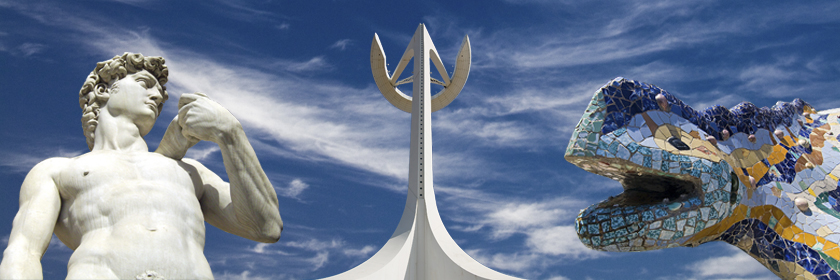





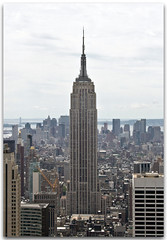
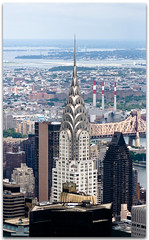
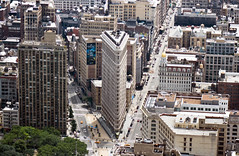




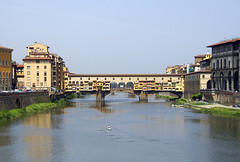




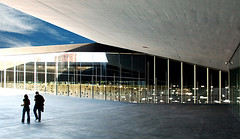


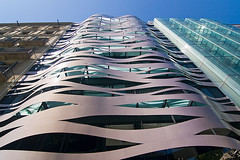



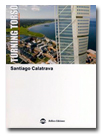

No hay comentarios:
Publicar un comentario